|
In late December, news broke from Wuhan China that a new virus was making its way through the population. Covid-19 was spreading through the country of 1.3 billion people, forcing them into a total lockdown for two months. At the time of writing this, the World Health Organization reports that China has seen 82,985 cases, and 4,634 deaths. When the disease first broke out in Wuhan, doctors did not know what to make of it, initially labeling the virus as Pneumonia. This misdiagnosis allowed the virus, which often doesn’t show symptoms until days after contraction, to spread from the travel hub of Wuhan, to the rest of China, and eventually the world. Eight months later the United States leads the world in with cases with 5.64 million, as well as deaths with 175K, according to the Center for Disease Control and Prevention. Claims of the virus being a hoax, or some sort of biological weapon created by the Chinese have perpetrated the American consciousness. President Trump has labeled the virus “Kung Flu” in an attempt to push blame for the virus onto the Chinese. Now that we are months into the virus, we have a chance to reflect on how Governing bodies around the world have handled the virus response, and what the results have been. This article will objectively analyze the Government responses of China, Japan, Sweden, Cuba, and the United States, in terms of lockdown protocol, economic relief policy, and healthcare sector response. China Population: 1.3 Billion Cases: 84,951 Deaths: 4,634 Let us begin where the Virus started, in China. The response to COVID-19 fell on the shoulders of the Chinese Communist Party, headed by Xi Xingping. Despite claims that China attempted to hide the Virus from the world, Xi Xingping was issuing warnings to other countries to “take the virus seriously” in late December. UFC women’s Strawweight Champion Zhang Weili, the first Chinese champion in UFC history, spoke about Covid-19 in her post fight speech on March 7th, 2020. Although China originally misdiagnosed the virus, claims that they tried to hide it from the world appear fraudulent. The slogan “China lied people died” seems less based on reality, and more in an attempt to place blame for the Virus on a nefarious other. On the 23rd of January China closed all public transportation and banned citizens from leaving Wuhan. China continued to lock down cities until over 780 million people in total were under strict lockdown, only being allowed to leave to purchase provisions twice a week.[1] Financially China’s banks and financial institutions have propped up both large and small businesses, in order to help them sustain themselves during the virus and recover when it has run its course. In addition, individuals received payments to support themselves while being unable to work during quarantine.[2] This has allowed them to avoid the financial instability and unrest felt by other countries around the world. China also began producing for the sake of protecting their population, which may appear as a foreign concept to many countries where production is only carried out for the sake of profit. China began by producing 1.6 million test kits per week in order to track and trace the virus. In addition, China built multiple hospitals within two weeks in order to treat those who contracted the virus.[3] This was vitally important in containing the virus, as 16% of people who contract Covid require hospitalization. For reference, only 0.2% of influenza patients are admitted to a hospital.[4] The response of the Chinese Healthcare system was to quickly mobilize doctors and health experts; 1,800 epidemiologists were tasked with tracing those who had been exposed to the virus. 20,000 doctors were brought from outside providences, into Hubei where the outbreak was at its worst. These tracing methods, and mobilization of the healthcare sector, as well as production for the sake of treating the sick were vital in China being able to contain the virus. The Chinese culture appears, from the outside looking in, to be far more concerned with the public good, and trusting of their Government than countries such as the United States. This has allowed China to keep their Covid numbers low despite being the largest, most crowded country on the planet. Japan Population: 126 million Cases: 61,914 Deaths: 1,179 Next, let us turn to the capitalist nation of Japan. The first outbreak In Japan occurred on the Daimond Princess cruise ship outside of Tokyo. (7). Passengers were quarantined on the ship itself until the virus ran its course. The Japanese Government did not originally have testing kits available to conclude whether the outbreak was in fact Covid 19. Since the outbreak Japan moved to a regional method of addressing the virus. Rather than having their response handled by a national organization such as the Center for Disease Control (CDC) in America, the Japanese had smaller Public Health Centers (PHCs) focus on containing the virus in specific locations[5]. This was an attempt to allow health officials to focus on specific regions, which may have different factors at play when it comes to containing the spread of Covid. Any Japanese citizens with symptoms have been encouraged to call in to a PHC. Health experts then determine whether the caller should be tested or treated for the virus. After spread of the virus increased, Japan chose to declare a national state of Emergency. This strengthened the existing healthcare infrastructure, with measures such as converting hotels into makeshift hospitals. The strategy has allowed Japan to flatten the curve, doing so better than countries of similar size, such as Italy. PHCs regional sphere of influence allowed them to make specific adjustments when the country suffered from a second wave of outbreak. The main fault with the system was an original unequal distribution of recourses. Many PHCs were heavily staffed, while others were understaffed. Declaring a state of emergency and creating a communication network between the PHCs was vital to distributing recourses where they were most needed. As far as lockdown protocol, the Japanese government simply made a mask mandate for anyone going outside[6]. Part of Japanese culture is wearing a mask when you are sick with the flu or cold. This made it easy for the Japanese public to adjust to wearing masks in public until Covid had passed. New York Times author Motoko Rich writes that during her time in Tokyo when there was no pandemic, she had grown accustomed to seeing people where masks in public.[7] Economically Japan has enacted an almost trillion-dollar bailout to protect their economy during the pandemic[8]. Billions of dollars will go to cash handouts for individuals, and bailouts for small business owners. Although the government did not force firms to shut down, many shops chose to close, and many workers have been telecommuting to work. Although the Japanese economy has dipped slightly, it shows impressive resilience to the virus. Another factor in this could be the Japanese culture of hard work, which discourages staying home unless entirely necessary. Japan managed to flatten the curve through an innovative healthcare infrastructure, as well as a culture which had no problem accepting a mask mandate. Sweden Population: 10 million Cases: 86,068 Deaths: 5,810 Many Covid sceptics have pointed to Sweden as a country who were able to flatten the curve without a government mandated lockdown. While most of Europe and Sweden’s Scandanavian neighbors have shut down their economies and mandated quarantine, Sweden chose to forgo a lock down in favor of “herd immunity.” The idea that young people will get the virus, and make a full recovery, while also developing immunity to the virus. There is no mask mandate, gatherings of 50 or more people are banned, and residents are encouraged but not mandated to work from home. Instead the Swedish government launched a massive information campaign to warn people about the danger of the virus, as well as how to avoid contracting it. Swedish Epidemiologist Mozhu Ding says Sweden’s ability to flatten the curve is “likely a combination of measures taken by individuals, businesses, and a widespread information campaign”[9]. Sweden experienced lower levels of both cases, and deaths, when compared to European countries such as Spain and Britain. Many Swedish Academics have been critical of the response; however, 25 Swedish academics published an op ed in USA today titled “Sweden hoped herd immunity would curb Covid-19. Don’t do what we did. It’s not working.”[10] The academics argue that Sweden has a death toll “nearly five times greater than that of the other Scandanavian countries combine”[11] Sweden has the highest population of the Scandinavian countries, and so they should be expected to have higher numbers. However, both the percentage of contracted cases by population, and per capita cases have been much higher in Sweden than their neighbors. Sweden hoped that the herd immunity would allow their economy to thrive while the rest of the world was stagnant. However, the global economic slowdown caused by the pandemic has also affected the Swedes. The Swedish Central Bank announced that the GDP is down 4.5% from last year.[12] The Swedish strategy has received much praise from Americans, but has also come under fire from experts, including those within the country. In April 2,000 Swedish scientists signed an open letter urging the Government to reconsider their strategy and issue a nationwide lockdown. The Swedish Prime Minister has defended the decision to forgo lockdown, arguing that his strategy both protects individuals, and limits the spread of infection. Sweden is committed to continue with a policy of testing and tracing the virus while encouraging individuals to take precautions. There is no plan to enact a lockdown at this point. Cuba Population: 11 million Cases: 3,565 Deaths: 88 Since the 1959 Revolution led by Fidel Castro and Che Guevara, Cuba has been an incredibly important geopolitical player. The country has found themselves under economic embargo from the United States and has suffered greatly from the 1991 collapse of the Soviet Union, who were the main trading partners of Cuba. During this time period many Cubans fled the country to settle in Miami, Florida. Since the 90s however, Cuba has made a recovery, and now trains more doctors than any other country in the world in free government funded universities. Even Western media, which is notoriously hostile towards the Cuban Government, admits that Cuba is a success story in their response to Covid-19. The Guardian released a stunning article titled “Cuba sets example with successful programme to contain Corona Virus.”[13] Although the article takes many pot shots at the Cuban Government, they admit that even despite Latin America being a hot spot for Covid at the time the article was published, Cuba’s numbers remain incredibly low in comparison. Although Cuba is reliant on the tourism industry, they chose to close their borders until the pandemic has passed. This has disallowed new cases from coming into the country via tourist. Cuba has mobilized its vast number of doctors to walk the streets and screen every house in the country on a nearly daily basis. American University Professor William Leogrande says, “There is no country in the hemisphere that does anything approaching this”[14] In reality there is no country in the world who has taken the same precautions as Cuba. Even the hyper intense Chinese response simply did not have the ability to screen every home, due to the population of 1.3 billion. Any Cuban who tests positive for the virus is immediately hospitalized, and those in contact are placed in 14-day isolation centers. Cuba has survived economically, as they are not a country reliant on exporting goods. Rationing food and supplies in time of Crisis is nothing new for the Cuban people who have long lived under a 60-year embargo from the world’s largest economic superpower. After containing the Virus in their own country, Cuba has begun exporting their surplus of doctors in order to assist in other countries. Holding true to Fidel Castro’s famous line “medicos y no bombas” in which he claimed that while other countries export bombs, Cuba will instead export doctors. The United States has urged countries to reject Cuban medical support, claiming that the doctors are unpaid, and are simply part of a geopolitical ploy to gain the goodwill and financial support of other countries. Right Wing Brazilian leader Jair Bolsonaro expelled 10,000 Cuban doctors upon taking office, claiming that they are “terrorists disguised in Uniforms.” Recently as Brazil struggles to contain the spread of Covid, Bolsonaro has requested Cuba return the 10,000 doctors to Brazil in order to help the now overcrowded hospitals.[15] Although some criticize Cuba’s “isolation camps” as coercive, there can be no denying that the small communist run island is a success story when it comes to fighting the global Pandemic. The United States of America Population: 328 million Cases: 5,680,000 Deaths: 176,000 The United States currently stands as the world leader in both cases and deaths related to the Covid-19 virus. During the Pandemic, the United States has seen mass protests demanding racial justice, after the police murder of George Floyd. One of the most politically polarized nations in the world has become even more divided over issues of police brutality, as well as the Government response to the Covid-19 Pandemic. Democrats have accused President Trump of calling the virus a hoax, however, this is false, as Trump never claimed the virus was a hoax, but rather said the Democrats criticisms of how Trump handled the Pandemic were a “hoax.” This serves as an example of how hyper politicized the Corona Virus has become, as the US approaches the 2020 election. Elected Democrats have rushed to attack Trump over his handling of Covid, while providing little in the way of substantive alternatives to the Trump administration’s response. Nancy Pelosi and the Democratic majority caucus have continually failed to push through a second $1,200 stimulus check, as 40 million Americans now risk eviction, while 26 million adults say they have struggled to afford food during the pandemic.[16] President Trump has repeatedly stated his opposition to any kind of lockdown. The brash US President has repeatedly looked to blame China for the Virus, which has now taken over 150,000 American lives. Trump drew backlash at a campaign event earlier this year, when he referred to the virus as “kung flu.” He can also be seen on Twitter referring to the pandemic as the “china virus”, a term which his supporters have eagerly adopted. As many states and localities now issue mask mandates, herds Trump supporters can often be seen protesting, claiming that the mandate in an infringement on their civil liberties. Leading up to the pandemic the US economy was in a 12-year period of expansion since the housing crises of 2008. Those who study economics will know the capitalist mode of production is prone to crises, which in modern times occur every 6-12 years. Libertarian economist Peter Schiff argues “The economy is a bubble; corona virus is the pin.” Meaning that the US economy was ready for a collapse, and Corona virus is simply what will spur the newest recession.[17] As has been the policy of the US government for years in times of recession, the federal reserve has injected over $6 million of liquidity into the stock market, in order to prevent a complete collapse. This has increased the US debt to $26 trillion.[18] Much to the dismay of any remaining principled conservatives who believed Trump’s campaign promise to eliminate the debt within 8 years. Given that 84% of stock is held by the richest 10% of Americans[19], this most recent bailout is sure to increase the ever-expanding wealth inequality between workers and owners in the United States. Whereas other countries have locked down their borders or had those entering the country quarantine for two weeks in hotels, the United States continues the border policy of capturing asylum seekers and keeping them in closed quarter detention centers. Many refugees have tested positive for the virus, and rather than be quarantined, they are kept in tight quarters, which of course increases the spread of the virus. In terms of foreign policy, the United States has taken the opposite approach to Cuba, using the virus as an opportunity to heighten attacks on geopolitical rivals. As the Venezuelan Government struggles to handle the Covid pandemic at a time when the oil dependent nation is already deeply impoverished, the US has added to the already existing 144 economic sanctions on Venezuela[20]. The US has sanctioned both Iran and Russia for trading oil with Venezuela, whose economy is entirely dependent on revenue from oil exports. The US no doubt hopes that Covid will add to the destabilization of Venezuela and prompt an overthrow of President Nicolas Maduro. It can also not be ignored that the United States remains as the only developed country on the globe who does not guarantee healthcare to its citizens as a right. Therefore, there are many uninsured Americans who would be denied treatment after contracting the disease, or who would be treated, but would then leave the hospital under the massive burden of medical debt. Finally, it must be noted that 36.5% of the American population is Obese[21]. The CDC warns that obese individuals face a much higher likelihood of losing their fight with covid-19.[22] The Covid-19 pandemic in many ways shines a light on what many have criticized about the American system for years. Polarization, lack of healthcare, wealth inequality, rampant imperialism, and total and absolute distrust of the Government, have all taken shape in new ways during the Global Pandemic. It remains to be seen how this will affect the 2020 election cycle. Takeaways The Covid pandemic gives us a deeper glimpse into the nature of capitalism and US imperialism. The United States is a country which generally only carries out large scale production for the sake of profit. Not since World War 2 has the US seen a mass mobilization of industry for the sake of human good. During the war, the government demanded that private firms began producing weapons to aid in the fight against the Nazi death machine. Now after nearly 40 years of neoliberal hegemony, with the United States as the world's largest imperial superpower, the country no longer has the power to mobilize production for the sake of fighting the enemy that is Covid-19. Covid has enhanced the contradictions which are inherent in the Capitalist system. Those who own stock have massively increased their wealth, while workers struggle to buy food, and are threatened with eviction by their profiteering landlords. Once again, the Federal Reserve has bailed out the richest in society as the economy threatens to tank. Neoliberal news outlets praise the countries so called “economic experts” for managing to save the stock market. It is entirely irrational to praise the economic response of an administration, at a time when record numbers of people are facing the prospect of being thrown out of their homes. Imperialism has not diminished, or been put on hold during the pandemic, but has instead increased. The US has increased public pressure and economic sanctions on State enemies Iran and Venezuela. In addition, China, the number two economy in the world, and sole competitor to US global domination, has seen wide scale attacks from the Trump Administration, the private US media, and the Biden campaign, which promises to be tougher on China than Trump. This shows the sheer brutality of imperialism, that even in a time of Global Pandemic which threatens the whole of human society, the United States chooses to increase their efforts to starve out and destabilize countries like Venezuela. The US will stop at nothing to obtain the world's largest oil reserves, which remain in the possession of the Venezuelan Government. The response of the US populace is perhaps the most telling phenomenon of all. Rather than organize to demand change to the systemic issues which have plagued our country for years, Americans have become even more polarized. While racial justice protests are welcome, they have made no effort to demand the US prison system be radically reformed. Even though this system holds 25% of the world’s prison population; many for nonviolent drug offenses with a disproportionate amount of these being people of color. There is also the less welcomed Anti Mask protest, who either believe the virus is a hoax, or that a mask mandate infringes on their freedom. Clearly there is no left-wing vehicle or organization which people can throw their effort into, that threatens the current power structure, or gets to the root of the systemic issues plaguing the country. Rioting, looting, and mask protests may be seen on the surface as responses to the George Floyd killing, or the mask mandates. However, I would argue that we must make a deeper analysis. Capitalism is not broken, it is working exactly how it is supposed to; leaving workers in poverty, while a few elite Americans acquire incomprehensible amounts of wealth. Imperialism, which is the highest stage of capitalism, continues to increase, as the US war machine continues to expand, and tactics such as sanctions are used to destabilize foreign countries. It is these contradictions which are leaving the American people angry with seemingly no solution for their problems. Therefore, the burden falls on us to show Americans the systemic issues within the society they live in. We must create a left-wing vehicle against wealth inequality, imperialism, and production only for the sake of profit. People are enraged but have few productive places to use their rage as a force for good. In addition, our society lacks the ability at this point to see the systemic issues which exist within it. A hegemonic corporate media keeps people blind to the real systemic issues which have always existed. Let's organize, let’s read, and let’s fight. The contradictions of capitalism are becoming greater and greater. It is well past time that we organize and fight for a new system that focuses development in terms of humanity and not profit.
Works Cited [1] Wren, A. (2020). China Stopped the coronavirus. Your Country Wont. Medium. [2] Zhang, A., Tsoi, V., & Pang, C. (2020, May 02). COVID-19: Chinese Government Financial Assistance Measures. Retrieved August 26, 2020, from https://www.whitecase.com/publications/alert/covid-19-chinese-government-financial-assistance-measures [3] Ibid. [4] Wang, J., Zhu, E., & Umlauf, T. (2020, February 06). How China Built Two Coronavirus Hospitals in Just Over a Week. Retrieved August 26, 2020, from https://www.wsj.com/articles/how-china-can-build-a-coronavirus-hospital-in-10-days-11580397751 [5] Hamaguchi Kay Negishi Masaya Higuchi Masafumi Funato June-Ho Kim, R. (2020, July 22). A Regionalized Public Health Model To Combat COVID-19: Lessons From Japan. Retrieved August 27, 2020, from https://www.healthaffairs.org/do/10.1377/hblog20200721.404992/full/ [6] Rich, M., & Hayashi, N. (2020, June 06). Is the Secret to Japan's Virus Success Right in Front of Its Face? Retrieved August 27, 2020, from https://www.nytimes.com/2020/06/06/world/asia/japan-coronavirus-masks.html [7] Ibid. [8] Disis, J. (2020, April 06). The global economy just got a $1 trillion infusion from Japan. Retrieved August 27, 2020, from https://www.cnn.com/2020/04/06/economy/japan-economic-stimulus-coronavirus/index.html [9] Fiore, K. (2020, July 29). How Did Sweden Flatten Its Curve Without a Lockdown? Retrieved August 27, 2020, from https://www.medpagetoday.com/infectiousdisease/covid19/87812 [10] Doctors, 2. (2020, July 27). Sweden hoped herd immunity would curb COVID-19. Don't do what we did. It's not working. Retrieved August 27, 2020, from https://www.usatoday.com/story/opinion/2020/07/21/coronavirus-swedish-herd-immunity-drove-up-death-toll-column/5472100002/ [11] Ibid. [12] Perper, R. (2020, July 09). Sweden's controversial anti-lockdown strategy resulted in a high death toll and no real economic gain, data shows. Retrieved August 27, 2020, from https://www.businessinsider.com/sweden-coronavirus-strategy-high-death-toll-no-economic-gain-data-2020-7 [13] Augustin, E. (2020, June 07). Cuba sets example with successful programme to contain coronavirus. Retrieved August 27, 2020, from https://www.theguardian.com/world/2020/jun/07/cuba-coronavirus-success-contact-tracing-isolation [14] Ibid. [15] Steve SweeneyThursday, M. (2020, March 26). US pressures countries to reject Cuban aid during coronavirus pandemic. Retrieved August 27, 2020, from https://morningstaronline.co.uk/article/w/us-pressures-countries-reject-cuban-aid-during-coronavirus-pandemic [16] Nova, A. (2020, August 17). Congress fails to reach stimulus deal, leaving tens of millions of Americans desperate for relief. Retrieved August 27, 2020, from https://www.cnbc.com/2020/08/14/with-no-stimulus-deal-millions-of-americans-are-desperate-for-relief.html [17] Schiff, P. (2020, February 26). The Economy Is a Bubble, Coronavirus Is the Pin. Retrieved August 27, 2020, from https://moneyandmarkets.com/peter-schiff-economy-bubble-coronavirus-pin/ [18] Van Dam, A. (2020, April 15). Analysis | The U.S. has thrown more than $6 trillion at the coronavirus crisis. That number could grow. Retrieved August 27, 2020, from https://www.washingtonpost.com/business/2020/04/15/coronavirus-economy-6-trillion/ [19] Wile, R. (2017). The Richest 10% of Americans Now Own 84% of All Stocks. Retrieved August 27, 2020, from https://money.com/stock-ownership-10-percent-richest/ [20] Koerner, R. (2020, April 16). [UPDATED] Venezuela Confirms Coronavirus Cases as US Slaps New Sanctions. Retrieved August 27, 2020, from https://venezuelanalysis.com/news/14811 [21] Holland, K. (2046, July 02). Obesity Facts in America. Retrieved August 27, 2020, from https://www.healthline.com/health/obesity-facts [22] Certain Medical Conditions and Risk for Severe COVID-19 Illness. (n.d.). Retrieved August 27, 2020, from https://www.cdc.gov/coronavirus/2019-ncov/need-extra-precautions/people-with-medical-conditions.html Additional Sources Langton, K. (2020, May 30). China lockdown: How long was China on lockdown? Retrieved August 27, 2020, from https://www.express.co.uk/travel/articles/1257717/china-lockdown-how-long-was-china-lockdown-timeframe-wuhan Wu, J., Cai, W., Watkins, D., & Glanz, J. (2020, March 22). How the Virus Got Out. Retrieved August 27, 2020, from https://www.nytimes.com/interactive/2020/03/22/world/coronavirus-spread.html CDC.Gov, Cases in the U.S. (n.d.). Retrieved August 27, 2020, from https://www.cdc.gov/coronavirus/2019-ncov/cases-updates/cases-in-us.html *Additional thanks to Logan Moore for aiding with research means.
2 Comments
The United States’ healthcare system is broken. What do I mean when I say this? To start, the US is the only “developed” country in the world to not guarantee healthcare to its citizens through one form or another of a universal healthcare system. A universal, or single-payer healthcare system, is somewhat self-explanatory. An entity, in this case the government, is the “single-payer,” or only insurer in the system. In the US, we have what is called a “multi-payer” system, where there are multiple private insurance providers in the country. Elected Republicans (and even elected Democrats), as well as free-market fundamentalists, will claim that having more than one insurer is better because “competition” will cause these multiple insurers to lower their prices, or else they will be pushed out of the market because their prices are too high. However, this isn’t the case when it comes to healthcare. Single-payer systems perform better in nearly every metric, compared to systems that aren’t universal. To give an example of how single-payer systems are generally better than non-universal systems, there are two studies that indicate that the US healthcare system is not the best in the world, as some like to claim. The first study, findings by the Commonwealth Fund indicate that, “despite having the most expensive health care, the United States ranks last overall among the 11 countries on measures of health system equity, access, administrative efficiency, care delivery, and health care outcomes.” The US was the only country in this study to not have a universal healthcare system, and the fact that the US ranked last on this list illustrates the problems of a multi-payer private system in terms of health outcomes, access to care, and efficiency. This isn’t the only study with such findings, however. Another study by Health System Tracker found that the US ranked 9th out of 9 countries in terms of health care access and quality of care, despite having the highest per capita health costs out of the 9 countries. A big reason for this disparity between the US and the rest of the developed world is the lack of a public, single-payer system. In countries where there are private insurers in the market, there can be many problems. There isn’t an incentive for health businesses to provide every person with insurance for a myriad of reasons, including pre-existing conditions, costly procedures, and ease of access to care, just to name just a few, because paying for these areas cuts into these companies’ profits. Because private insurance companies won’t cover people for many different reasons, millions of people are uninsured in the US. According to National Nurses United, approximately 30 million Americans are uninsured, with another 41 million Americans classified as underinsured, which means that the costs associated with their plans make it so that the coverage is not worth the price. With over 1 in 5 people being uninsured or underinsured, this problem is very widespread. In addition, nearly 530,000 Americans go bankrupt every year due to medical bills, according to CNBC, and an estimated 68,000 uninsured Americans die every year because they don’t get the care they need because of lack of insurance, according to the journal The Lancet. The problem of uninsured Americans has been exacerbated as of late. Millions of Americans have been losing their health insurance during the biggest pandemic in the United States in 100 years. Many Americans have their health insurance provided to them through their workplace, and when the Coronavius pandemic hit the US, millions were laid off, which meant that many of those millions lost their employer-sponsored healthcare. According to CBS News, 5.4 million people had lost coverage by mid-July, with another 22 million people at risk of losing their insurance as of mid-August 2020. If you live in a country where you lose your health insurance during a pandemic, it may be time to rethink the country’s healthcare system. One of the reasons why our “health insurance” system is so broken is that there is essentially a middle man in the way of you getting care. You pay your premiums to the company, who then takes their cut in the form of profit and bureaucracy, before paying a smaller amount than you paid in to cover you when you need your insurance. Health insurance companies made over $35 billion last year alone, according to Fierce Healthcare. Why should a business profit off of the suffering of people? I certainly don’t think this is moral or even just, but this is essentially the business model of a private healthcare company. Under a universal healthcare system, because the government is the single insurer, it can guarantee healthcare to its citizens (regardless of ability to pay) because there is no incentive for profit within a government system. This means that the government is willing to cover somebody even if it costs more than that person pays in. A good example of a government program that covers all despite the costs associated is the United States Postal Service. The USPS is willing to provide mail to all citizens in the US in a timely manner, whether a person lives right next to a Post Office or in a secluded area. Private postal companies like FedEx and UPS won’t deliver everywhere because it isn’t profitable to do so. The USPS is an example of a public good, where our tax dollars fund this agency in exchange for universal mail delivery at little cost, especially compared to private companies. I believe that our healthcare system should similarly be a public good, wherein our tax dollars fund our health insurance in exchange for universal, free-at-the-point-of-service care (this means no premiums, copays, or deductibles). In addition, a government program would have less wasteful spending, despite what bureaucracy-fearing politicians will tell you. According to the Center for American Progress, billing and insurance-related “costs for traditional Medicare and Medicaid hover around 2 percent to 5 percent, while those for private insurance is about 17 percent.” This means that government programs, Medicare and Medicaid, provide more money to care with less money lost on bureaucratic waste and profits compared to private insurers. Because of all of the problems with our current healthcare system, a single-payer system in the United States seems like a no-brainer. Next, I will explain the Medicare for All policy and how America can one day guarantee healthcare to all of its citizens. An answer to the problems of our current health insurance system can be found within the pages of Senator Bernie Sanders’ Medicare for All bill in the Senate, or in Representative Primila Jayapal’s bill under the same name, introduced in the House of Representatives. The Medicare for All system, if passed, would be implemented over a two-year period, with the first year seeing the expansion of Medicare to cover dental, hearing aids, and eyeglasses, and expanding the Medicare enrollment age to 55 and including those 19 and under. The next year would expand Medicare to all citizens, so that every American would be covered under a single-payer program. Once this system is implemented, premiums, copays, and deductibles would be a thing of the past. Instead of having to pay out of pocket at the hospital, citizens would be issued a healthcare card, and when a person goes to the doctor or dentist, they simply show their insurance card and get the care they need, similar to how a public library currently operates. Public taxes would go up to fund the program. However, think of health insurance costs (premiums, copays, and deductibles) as a private tax, because, for the most part, in order to have healthcare, a person is required to pay these costs, or else they lose coverage. The private taxes paid to private insurers would be gone, and the public taxes would be lower than the private tax, essentially leading to a tax cut. The reason that the public taxes can be lower is, as aforementioned, the system would be more efficient (more money directly to care and less on bureaucratic waste) and the profit-taking middle man would be removed. Sanders’ proposal is very generous, and if it were to be passed, it would be one of the most comprehensive healthcare plans in the world. Instead of having to pay for private health and dental insurance, both would be covered under the same single-payer plan. This would make life a lot easier, especially for working families who may not have time to deal with choosing which private health and dental insurer they can afford (if they can afford one at all because of the outrageously high costs). Instead, everyone would get guaranteed insurance with little to no hoops to jump through. Medicare for All would make healthcare cheaper and our lives more efficient, not just because of the removal of headaches associated with choosing plans. Medicare for All would give every person more freedom in terms of their health care. Medicare for All, despite the fear mongering surrounding the policy, gives Americans more, not less, choice. Pete Buttigieg, a Democrat running unsuccessfully in the 2020 Democratic Primary, ran on a policy under the name of “Medicare for All Who Want It.” This policy was essentially a public option, in which people can opt into a government healthcare program if they want, but which leaves in place private health insurance companies (this name also co-opts the popularity of the Medicare for All plan while being not nearly as sufficient). This policy may sound appealing on its face, but still leaves in place many of the problems of our current healthcare system. For one, millions of Americans would still be left uninsured because the public option would be funded through premiums, which would still be unaffordable to many. Joe Biden ran on a similar plan, which boasted that 97% of Americans would be covered under a public option system. This would still leave about 10 million Americans uninsured, which is 10 million too many. Buttigieg and Biden claimed that a public option gives Americans a “choice” in their health insurance options. The choice, however, is that of which private health insurance middleman to be covered by. The government option could be a good system, but the fact that private insurers still exist is a problem. One thing that insurance companies could do is halt the coverage of their old and high-risk patients and “unload” them onto the government program, therefore increasing the cost of the public option and making private insurance seem better by comparison. This is the danger of leaving private insurers in the market. These companies will do everything they can to stay in business. National Nurses United, one of the organizations leading the struggle for M4A In terms of other freedoms under a universal system, there is more freedom to choose your doctor. Under our current system, the concept of a “network,” or system of hospitals and doctors in which you can receive care, severely limits your choice of who you can see or where you can go. However, under a Medicare for All system, you would be able to choose any hospital or doctor, for all of the hospitals would accept the same insurance, and therefore can’t turn away someone with incompatible insurance or even one without insurance, because that would no longer be a concern. The choice is really between freedom and security (both in terms of finances and guaranteed coverage), or restrictions and uncertainty. The biggest question surrounding Medicare for All is the question of “how do you pay for it.” Under Sanders’ plan, there is a 4% tax starting with income around $30,000, and working progressively up with income. Some estimates say that the program will cost anywhere from $28 trillion over a decade, according to the Committee for a Responsible Budget (CRFB), to about $32 trillion over the same period, according to both Blahous and the Urban Institute (CRFB). This seems like a lot of money (because frankly it is), but our current healthcare expenditures, when stretched over a decade, exceed even the highest estimates from the CRFB. In 2018, US healthcare spending exceeded $3.6 trillion, according to the Center for Medicare and Medicaid Services (CMS), and this number is only expected to grow. Over a decade, this spending could surpass $40 trillion, and Americans would still be worse off than other nations that have universal systems. In the long run, Medicare for All is estimated to save money. Even if Medicare for All cost more than our current system (although according to all estimates, the plan would cost less), wouldn’t it be worth it to have all Americans covered under a universal system? As previously stated, Medicare for All would be one of the most comprehensive plans in the world, with almost all health expenditures covered. Would it not be worth it to spend more or the same amount as our current system to get more bang for our buck? This to me again seems like a no-brainer. I am not alone when I think this. According to an August poll by Hill-Harris X, 69% of Americans, including 87% of Democrats, 68% of Independents, and 43% of Republicans, support “providing Medicare to every American,” which is a simplistic way to explain exactly what Medicare for All does. Medicare for All is so popular because of all of the benefits associated with the plan, as described before. However, there is one final reason that Medicare for All has the support it does; Medicare for All would disproportionately benefit the working class people of this country. In the midst of the Coronavirus pandemic, the last thing a person should have to worry about is not having health insurance. However, as previously covered, there have been at least 5.4 million people who have lost their health coverage during this pandemic, and an estimated 22 million people at risk of losing their coverage. These Americans, many of them working class, lost their health coverage through no fault of their own. Rather, it was the fact that their health coverage was tied to their place of employment and they were laid off during the pandemic. Having a single-payer system would eliminate the problem of losing insurance after being laid off from work. The fact that health insurance can be a benefit through a job means that if you were to get laid off, even if it wasn’t your fault and was caused by a pandemic, you can still lose health insurance. In addition, having health insurance as a benefit through work means that it can be hard to leave a job that you might dislike because it has ‘good’ health benefits for you and your family. Having a universal system means that workers are freer to seek other places of employment because a major benefit that they might get through work is now guaranteed to them by the government. Guaranteeing healthcare to every person in America would make our country much healthier. With everyone having guaranteed healthcare, there would be more people that would now be able to get treated for common conditions like the flu, the cold, and other illnesses that can be spread easily. An example of where our current system fails in this way is the foodservice industry. According to Anuj Gangopadhyaya and Elaine Waxman, there are nearly 7.5 million adult foodservice workers in the country. At least 1 in 4 of these workers were uninsured in 2017, and this has had dire consequences for all involved. The CDC says that sick food service workers cause hundreds of illness outbreaks every year in America. Now it may seem like common sense for these sick workers just to stay home, but for a working class person who may not have insurance, working as many hours as possible is the only way to put food on the table, and a sickness won’t necessarily stop this. The CDC finds that almost half of foodservice workers who worked while sick worked because they needed to get paid more. Having a universal healthcare system would protect these uninsured (and even insured) workers because they would have some financial security in going to the doctor. However, a policy like paid sick leave could also provide aid to service workers and actually keep them home when they are sick. The Coronavirus pandemic has exposed another vulnerability in our healthcare system. The fact is that many essential workers (the people working jobs with the highest chance of exposure to Covid) are uninsured. Trying to live through a pandemic while on the “front lines” and uninsured, is at the very least, stressful, and at most, costly and maybe even deadly. Medicare for All would protect workers who don’t currently have insurance by guaranteeing healthcare, which is exactly what many millions of Americans need in this current moment. Another important piece of Medicare for All is the fact that, if everyone were guaranteed healthcare, unions would be able to fight for more for their workers. When healthcare is tied to jobs, it kills a unions’ bargaining power because the union will spend a majority of their time fighting for healthcare rather than fighting for better wages or working conditions. For example, the UAW union spends a majority of its bargaining power on healthcare, which ends up hurting the other causes a union could explore if all of its members were guaranteed healthcare. I am an advocate for universal unionization because I believe that all workers should be able to collectively bargain with their employers. However, if all that a union is able to accomplish is to secure healthcare (while this is obviously important to all in the union) then the bargaining power of the unions decreases. Medicare for All would therefore strengthen unions. The benefits of a Medicare for All system on the working class would be apparent in many different ways. The most basic yet important reason that Medicare for All would benefit workers is that everyone would have healthcare guaranteed to them, and for a person who is working long days to provide for their family, the last thing they want to do is worry about what happens to them and their family if they get sick because they don’t have health insurance. The 1 in 5 Americans who are uninsured or underinsured would suddenly be covered under a generous plan, the 530,000 Americans who go bankrupt from medical debt would no longer have to worry about such debt, and the 68,000 Americans who die every year from lack of insurance may have some semblance of a fighting chance once Medicare for All gets passed. While there are many benefits for workers under a single-payer system, the most basic yet crucial benefits of Medicare for All on the working class is the fact that everyone will have healthcare. The future of Medicare for All is not quite certain. While the Democrats control the House, Speaker Nancy Pelosi won’t even bring Rep. Jayapal’s bill up for a vote. Even if the measure were to pass the House and move onto a Democratically controlled Senate in 2021 (assuming that Democrats take control of the Senate after the 2020 election), there will still be a fight there. If Joe Biden were elected president in the coming months, he has said repeatedly that he would veto Medicare for All if it reached his desk. These options don’t sound promising. Yet there is still hope. The fact that over two-thirds of the country now support an idea that, before Bernie Sanders’ 2016 campaign for presidency, wasn’t in the mainstream of American politics, shows that once Americans were shown the broken nature of our current system, we now see a better alternative in Medicare for All. We now want to catch up with the rest of the world and guarantee healthcare to all. It may take years or even decades, but we can’t stop fighting for this important measure. In the meantime, we must elect progressive candidates that champion this policy. However, as we have seen time and time again, electoral politics does not always work in favor of the people. Instead, what we need is an outside movement to pressure politicians into passing legislation that an overwhelming majority of the country supports. I know that I will do everything I can to push for this policy, and strive for a more just healthcare system for all Americans. Works Cited CBS News. (2020, August 05). Over 25 million Americans at risk of losing health care as coronavirus pandemic rages: "It's been real hard for me". Retrieved August 20, 2020, from https://www.cbsnews.com/news/covid-pandemic-health-care-25-million-risk-losing-coronavirus/ CDC. (2016, December 5). Food Workers Working While Sick. Retrieved August 24, 2020, from https://blogs.cdc.gov/yourhealthyourenvironment/2016/12/05/food-workers-working-while-sick/ CMS. (2019). Historical. Retrieved August 24, 2020, from https://www.cms.gov/Research-Statistics-Data-and-Systems/Statistics-Trends-and-Reports/NationalHealthExpendData/NationalHealthAccountsHistorical CRFB. (2019, November 06). How Much Will Medicare for All Cost? Retrieved August 24, 2020, from https://www.crfb.org/blogs/how-much-will-medicare-all-cost (DCD), D. (2017, August 04). Can I get coverage if I have a pre-existing condition? Retrieved August 20, 2020, from https://www.hhs.gov/answers/affordable-care-act/can-i-get-coverage-if-i-have-a-pre-existing-condition/index.html Galvani, A., Parpia, A., Foster, E., Singer, B., & Fitzpatrick, M. (2020, February 15). Improving the prognosis of health care in the USA. Retrieved August 23, 2020, from https://www.thelancet.com/journals/lancet/article/PIIS0140-6736(19)33019-3/fulltext Gangopadhyaya, A., & Waxman, E. (2020, April 09). Food Service and Preparation Workers and the COVID-19 Pandemic. Retrieved August 24, 2020, from https://www.urban.org/research/publication/food-service-and-preparation-workers-and-covid-19-pandemic Gee, E., & Spiro, T. (2019). Excess Administrative Costs Burden the U.S. Health Care System. Retrieved August 20, 2020, from https://www.americanprogress.org/issues/healthcare/reports/2019/04/08/468302/excess-administrative-costs-burden-u-s-health-care-system/ Konish, L. (2019, February 11). This is the real reason most Americans file for bankruptcy. Retrieved August 24, 2020, from https://www.cnbc.com/2019/02/11/this-is-the-real-reason-most-americans-file-for-bankruptcy.html Kurani, N., McDermott, D., & Shanosky, N. (2020, August 20). How does the quality of the U.S. healthcare system compare to other countries? Retrieved August 23, 2020, from https://www.healthsystemtracker.org/chart-collection/quality-u-s-healthcare-system-compare-countries/ Martin, J. (2020, August 04). 87% of Democrats support "Medicare for All," though Joe Biden doesn't. Retrieved August 24, 2020, from https://www.newsweek.com/87-democrats-support-medicare-all-though-joe-biden-doesnt-1522833 Minemyer, P. (2020, February 24). Health insurers' profits topped $35B last year. Medicare Advantage is the common thread. Retrieved August 20, 2020, from https://www.fiercehealthcare.com/payer/big-name-payers-earned-35-7-billion-2019-here-s-one-common-thread-their-reports National Nurses United. (2019). Medicare for All Act. Retrieved August 20, 2020, from https://act.nationalnursesunited.org/page/-/files/graphics/0419_MFA_Federal_FactSheet.pdf New 11-Country Study: U.S. Health Care System Has Widest Gap Between People With Higher and Lower Incomes. (2017, July 13). Retrieved August 23, 2020, from https://www.commonwealthfund.org/press-release/2017/new-11-country-study-us-health-care-system-has-widest-gap-between-people-higher With the latest attack from Trump on the US postal services for the sake of voter suppression, the outrage from the democrats has been at an all-time high since the epoch of the great Russia Gate conspiracy. The difference is that now, unlike Russia Gate, this attack on the post office is something real and worth worrying about. The post office is one of the few and great public services of our country, and any attack on it should be fought against ferociously. The main concern of this work is on the reaction by most democrats to these attacks by Trump, and specifically on what precisely it is that they are outraged by. To the naked eye the reaction of outrage is the natural result of a clear case of voter suppression and hindrance of our democratic process. To be fair, it might genuinely be the case that many democrats are really outraged at this monstrosity; at the end of the day, it is truly a monstrosity. But in terms of the democratic establishment, the discontent comes not in the action itself, but in the image the action portrays. Essentially, how the action destroys what has been a bipartisan effort to create the illusion of democracy, revealing the truly undemocratic character of our society. The most drastic change the Trump administration has brought to the US has not been the brutal treatment of immigrants, the fascistic use of the state’s instruments of violence on protestors, the imperialist and regime change policy, or the complete lack of regard of the interest of the mass of Americans; all those things are quite old and hence were already there before him. Policy wise his government has been indistinguishable from any administration of the last four decades of Neoliberal rule. So, what has the democrat's outrage really been about? Well the answer lays in the mask, and not the one used by Jim Carrey. The mask has been ideologically the most essential tool in the development of our country. The mask is the ideological justification for the about-to-be or already-committed atrocities. Whether it is the mask of “civilizing the Indian savage”, “enslaving the inferior blacks”, “preventing the spread of communism”, or promoting the “spread of democracy while fighting terrorism”, the mask is how we have been able to convince the populace to accept the atrocities we will commit; whether it is the genocide of the native, enslavement of blacks, or the brutal imperialist expansion into the global south and middle east. In any case, the mask has been the security of the ruling classes of our country since its founding, without it their hegemonic rule, which allows them to commit all the crimes they want to continue capital accumulation, would begin to shatter. Thus, what scares democrats is not actually any of the policies Trump is proposing, hell, most of them has been approved by the democrats themselves; their real fear is the how Trump is doing all these things. It is in the question of the how that we find the real answer to their outrage, whether of this latest event or any other event of the last three years of his administration. The real problem we must attack, if we consider ourselves proponents of democracy, is not merely the last three years of Trump, but rather the accumulation of previous administrations that took us to the point of having a Trump - while now telling us that all the problems started with Trump. More than attacking Trump, something so simple a child could do, we must attack a democratic establishment who has abandoned workers the last 4-5 decades of Neoliberal policies; leaving working class Americans with such a feeling of abandonment that they see their only hope in the fake right wing populism Trump represents. If we consider ourselves proponents of democracy, of a government of and by the people; then unlike the democrats want us to believe, the attack on American democracy did not start three years ago. The attack itself is inexistent, because for there to be an attack on democracy there must exist a democracy to be attacked; and I’m sorry to break it to you, but having the opportunity to vote every two years for puppets chosen by the ruling elites of our country is not democracy. A slaves opportunity to choose his master does not change his status as a slave, so that our opportunity to elect different factions of the ruling elite of our country does not change the fact that at the end of the day you are voting for elite backed candidates who only care about you when it is time for you to vote, and whose interest lay in those factions of the ruling class that funded their campaigns. If we really are proponents of democracy, we must reject the current concept of democracy we are used to in this country. We must realize that what we have is “democracy for the insignificant minority, democracy for the rich”[1], and that in essence “to decide once every few years which member of the ruling class is to repress and crush the people through parliament”[2] is in no way, shape, or form actual democracy. What we have now for the mass of Americans is a dictatorship of the class who owns the means of production, the media, the politicians, and who has created every structure in society to make you think that democracy for them is equivalent to democracy for you. Anyone who truly believes in democracy must reject this for a democracy of the majority, a democracy where people actually feel like they are contributing to the creation of the world around them and not participating blindly in forces that where already present there before they arrived. If we really uphold the constitutional values of a democratic government of and by the people, we must actively struggle against the imposition of this democracy for the few. We must struggle to build a country were politicians aren’t funded by special interest making each election predictable through an analysis of who got more money from the elites, and where democracy and participation isn’t just an event every two years where we get a nice sticker for partaking in it. We must realize that when working man and women around the country wake up for their 9-5 jobs, they are experiencing the hand of tyranny for most of their day. At their workplace they are subject to the will of the person who owns where they work. And even though these working man and women are the ones who create all the wealth of our country, they have essentially no say in their work. They have no participation in how they produce, what they produce, and what happens to what they produce. They are a part, like any other machine, in the process of the accumulation of capital. In essence, at work, this period where most Americans spend most of their life, what they experience is not democracy, but the tyranny of their boss. Thus, when it comes to the democrats outrages of Trump, let us not be fooled. What bothers them is not itself the voter suppression whose goal the attack on the USPS represents, but how obviously un-democratic it is. But, un-democratic in what sense? If we have already established that there is no real democracy for the mass of Americans. Well, it is undemocratic in that it thwarts the process of the illusory democratic process of the masses, which in reality is the game by which the different factions of the ruling elites play house and decide who will be the face of the shitshow for the next few years. What bothers the democrats is not the un-democraticness itself, but how it destroys even the fake democratic veil previously held up to cover the dictatorship of capital. Their problem is not really with Trump’s attack being undemocratic, if that was really the case they would be trying to abolish the basically legal bribe mechanism that came with Citizens United, or trying to expand democracy at work through promotion of union membership or cooperative worker owned businesses. None of these things are promoted by them because they represent the potential of democracy for the many, the biggest threat to their democracy of the few. Thus, their real problem is with the unapologetically un-democraticness of Trump’s actions; because to them it is most importantly an attack to the legitimacy of their mask, both nationally and internationally.
The struggle of the democrats against Trump over the last three years has not been one fought in the arena of matter but in the arena of form. What bothers them about Trump is not what he actually does (matter), but how it is that he does it (form). Thus, although we do have to struggle against the un-democratic actions of the current administration; we must primarily struggle against those who have for many years done the same in the dark, and when now it is done in the light they fight to bring it back to the dark. Our struggle cannot just be against the symptom which Trump represents, but against the totality of the illness itself; in order to then actually destroy it at the root and prevent any worst symptoms from appearing. In essence, if you really are disgusted by the Trump administration, your fight must also include those who actively created the conditions for that administration to emerge. If what disgusts you about Trump is the material, the actual policies and what he does, not just how; then your answer is not in changing the form but maintain the content. This means that your answer is not in Joe Biden or anyone else in the democratic establishment. Your answer to the Trump phenomena, if what he is doing is what bothers you, is to fight against the whole system itself. Not just because it was the system that brought about Trump, but because everything that is despicable in the material of Trump is identical to every other administration the system has produced, and the removal of it is not in the return to the mask, but in the destruction of the whole head in which the mask is put on and removed. The Trump phenomena seems to have divided the traditionally organized ruling classes of our country. The answer from us must be to capitalize on their weakness and on the chaos being produced by the pandemic and organize ourselves. We must organize ourselves towards destroying this hidden fetter which maintains us in the shallow democracy of a few and tyranny for the many. This hidden fetter is our economic system. A system that has as its only condition the accumulation of capital by any means necessary; and which to maintain its tyrannical rule it has created the illusory mask of democracy. The mask which democrats today are fighting endlessly to put back on; knowing very well that without it their mass blinding hegemony, both nationally and internationally, will begin to crumble. Something which I believe we are already witnessing. [1] V.I. Lenin, The State and Revolution (Foreign Language Press, 1970), 74. [2] Ibid., 38. Marx and the Silesian Weavers In 1844 a group of weavers rose in Silesia, Prussia protesting the new machinery and the driving down of wages. The main action of protest was the destruction of these newly bought machines as well as the property ledgers. Afterwards, the Prussian army force was asked to come in and straighten out the situation, something which resulted in shots firing and 11 workers being killed. Uprisings like this were pretty new in this German/Prussia area, given that it was one of the last European countries to industrialize. This means that the event caught the attention of quite a few Prussian intellectuals who wrote their takes of the weaver’s revolt. One of the fellows who wrote on the uprising was Arnold Ruge, a German philosopher, and editor of the Deutsch–Französische Jahrbücher. Ruge believed that this uprising had a singular character, that the revolt over these conditions were not something that could be generalized to the rest of the traditionally unpolitical Germans. This event, according to him, should cause no worry to the powers of the time, and should be considered as any other natural local distress. A curly haired 26-year-old Karl Marx responded to Ruge’s article, the essential message in the response will be a central example of how to analyze a worker’s revolt. Marx considered this uprising as what could now be called a Badiouian event. French philosopher Alain Badiou considers an event to be that instance in which the everydayness of life is destroyed and the inexistent of the current transcendence comes to light and then disappears with the finality of the event. What does this mean in layman’s terms? Well that it is in the event in which truth, that hidden inexistent of the current transcendence[1] (set of identity degrees in reality) reveals itself to people, both shattering their life as it was before, and creating the opportunity for their subjectivity. Although the truth disappears, the memory of it does not. The ethical person, the one interested in taking the path of the subject, is the one that remains loyal to the truth of the event, what Badiou calls the ethics of fidelity to the event. Essentially, this means dedicating yourself as subject to the unfolding of the truth process manifested in the event[2]. The point of bringing up Badiou’s event, is to demonstrate how, in the active participation of the unfolding of the truth process manifested in the Silesian weavers event, Marx is participating in this ethic of fidelity to truth; in this radical subjectivity which transcends the merely human with the inhuman part of the subject, dedicating itself to the service of a once hidden but now exposed truth. What then is the truth which Marx develops through his fidelity of the event? The question can be posed in the following way as well. If England had already been seeing uprisings with the Chartist, what then makes this uprising of the Silesian workers different? How does it go beyond the activity of the Chartist and the English proletariat at the time? The answer Marx gives is that: “The Silesian uprising begins precisely with what the French and English workers end, with consciousness of the nature of the proletariat. The action itself bears a stamp of superior character. Not only machines, these rivals of the workers, are destroyed, but also ledgers, the titles to property. And while all the other movements were aimed primarily only at the owner of the industrial enterprise, the visible enemy, this movement is at the same time directed against the banker, the hidden enemy.”[3] The two key points here are about the level of consciousness in the revolt. Consciousness first of itself as proletarians, which can be called the beginning of consciousness as workers for themselves, and secondly of its enemy in its visible and hidden unity. This conscious activity of a working class beginning to be conscious for itself has a historical significance. As Lukács states: “Class consciousness is identical with neither the psychological consciousness of individual members of the proletariat, nor with the mass-psychological consciousness of the proletariat as a whole; but it is, on the contrary, the becoming conscious, of the historical role of the class.”[4] This historical role is the one which calls the proletariat to “perfect itself by annihilating and transcending itself, by creating the classless society through the successful conclusion of its own class struggle.”[5] Marx saw this uprising, although de facto taking place in a locality, actually taking upon it a universal soul. In it being the natural reaction to capitalist exploitation and the different dimensions of alienation, Marx states that: “The community from which the worker is isolated by his own labor is life itself, physical and mental life, human morality, human activity, human enjoyment, human nature. Human nature is the true community of men. The disastrous isolation from this essential nature is incomparably more universal, more intolerable, more dreadful, and more contradictory, than isolation from the political community. Hence, too, the abolition of this isolation, and even a partial reaction to it, an uprising against it, is just as much more infinite as man is more infinite than the citizen, and human life more infinite than political life. Therefore, however partial the uprising of the industrial workers may be, it contains within itself a universal soul; however universal a political uprising may be, it conceals itself even in its most grandiose form a narrow-minded spirit.”[6] Although imbedded in the early philosophical phraseology of the young Marx, a phraseology he would come to drop within a couple years of writing this response, the message itself remains unchanged through his life’s work. This message centers around the importance of class struggle building itself up from the economic struggle (what he calls here the universal), towards then the political struggle (what he calls here the particular). This struggle that starts with the level of production, in the antagonisms of the present class structure, and moves from there to the political struggle, a sphere whose goal it is to maintain that class structure intact; has its first requirement for success in the achievement of proletarian self-consciousness as the historical emancipatory class. A consciousness which is itself usually achieved in the active struggle against the class determined to maintain the present order. Elaboration of the Method To understand the “universal soul” present in the Silesian weaver’s revolt, Marx had to understand, from the actions of these workers, the development of class consciousness as the result of the struggles against capitalist exploitation and alienation. With Lukács we have seen the great importance that lays in the workers achieving class consciousness; its realization represents the first necessity in any revolutionary movement. Understanding now that through the revolt itself, we can see levels of class consciousness, what else lays to be known in order to understand a worker’s revolt holistically? In this work, we will attempt to draw out the method of examination that extends beyond mere analysis of the consciousness in the rebellion. Not only to understand the totality of the revolt itself, but to also understand, more fully, the question of why a particular revolt took this form and not some other. In doing so, I hope to present a method through which the investigation of any revolt of labor against capital, could be understood in the fullness of its complexity. Before the Revolt; Quantity and Quality One of the mistakes we must refrain from, is falling into idealistic interpretations of worker revolts. One which merely looks at how we can understand class consciousness in the form of the revolt, without analyzing the material conditions that led to the revolt itself. This means that it is important to understand the material reality that is at the foundation of the conscious aspect we will examine. In the same way as in Marx’s analysis, there was before anything the awareness that the tipping point for the protest was the driving down of wages with the incorporation of new machinery. To understand this initial material level that precedes the protest itself, we must use the dialectical categories of quantity and quality. Far too often we see revolts being attributed to the last straw broken instead of understanding that ‘last straw’ as the result of a bunch of other different straws that came beforehand. For example, we know that water becomes ice at 32 degrees Fahrenheit. If we have a cup of water at 80 degrees Fahrenheit, and watch it drop all the way to 32 degrees Fahrenheit, it is that final quantitative subtraction that changes the quality of the water from liquid to solid. The same would be the case of addition and going from liquid to gas. In both instances, it takes a quantitative accumulation or subtraction to bring about a radical transformation in the thing as the type of thing it is. To often, when workers revolts is the subject of inquiry, we only look at that final degree, and forget that the degree lower is itself nothing, it is rather the accumulation/subtraction of degrees that allows that final drop of a degree (33 to 32) to go from qualitatively one thing to another, from liquid to solid, from workers going to work to workers striking. Any in depth study into workers revolts must be able to grasp this very clearly. As Brecher states “whether triggered by a relatively trivial incident or by a strike call, at some point in the accumulation of resentment workers quit.”[7] What is this if not consciousness, thanks to investigations of concrete worker revolts, of the dialectical principles that “every change is a transformation of quantity into quality.”[8] Thus, any investigation into the consciousness of workers as a historical class must understand not only the direct event that caused the revolt, but also have a general idea of the process of accumulation that gave that event the capacity of bringing about a qualitative change. Technological Rationalization and Reification of Analysis on Workers Revolt The inability to see the revolt in its full realization; seeing it as an independent thing caused by some other independent thing, constitutes the general trend of reification in a mature capitalism with universalized commodification of all things in society. What does this mean? Simply that as Lukács already noted, it is no longer just the traditional mysterious commodity that is fetishized and treated as a thing isolated from its context as the objectification of exploitative social relation, but rather this process of thingifying has extended to every other sphere of capitalist society in the course of the commodification of all things. As Lukács states: “Just as the capitalist system continuously produces and reproduces itself economically on higher and higher levels, the structure of reification progressively sinks more deeply, more fatefully and more definitively into the consciousness of man.”[9] It is of no wonder that in the general analysis of worker revolts we have a crude understanding not only of the revolt itself, but of that which caused the revolt. The revolt is rationalized with the logic of the society. Thus, what represents truly a universal character in a revolt, the worker’s disgust with the accumulation of all things in their daily exploited and alienated life; is rationalized into the logic of the system by reifying the cause of the revolt to be that final separate instance, standing alone as the sole cause of the unhappiness. In doing so, the problem is presented in a singular manner, the solution then of course is a singular one that falls within the one-dimensionality of the society. Thus, within the methodological investigation itself, we have the ideologically latent method, which presents itself as non-ideological and merely empirical, but whose actual aims are the translation of the uprisings into a logic that fits the system. As Marcuse states: “Once the personal discontent is isolated from the general unhappiness, once the universal concepts which militate against functionalization are dissolved into particular referents, the case becomes a treatable and tractable incident… Marcuse pointed how this takes place with the use of Roethlisberger and Dickson’s Management and the Worker; how they would take general statements like “the washrooms are unsanitary”, “the job is dangerous”, and “rates are too low”, and particularize it. For example, translating “the wages are too low” to “B’s earnings, due to his wife’s illness, are insufficient to meet his current obligations”; here the “universal concept of wages is replaced by B’s present earnings”[11], stripping it of its universality which aimed at a transcendence of the current system, and distorting it in its particularization to be something that can be fixed within the system. As Marcuse states: “The untranslated statement established a concrete relation between the particular case and the whole of which it is a case, and this whole includes the conditions outside the respective job, outside the respective plant, outside the respective personal situation. This whole is eliminated in the translation, and it is this operation which makes the cure (a cure within the system) possible.”[12] Thus, when we interpret a workers uprising against capital, in its full hidden material complexity; encompassing as well the finality of the universal character of the consciousness, we are not only understanding the protest itself a lot better, but also breaking through the ideological chains present in the current methodological tools of examination. Summation of Method In order to understand a worker uprising in its concrete and abstract contextuality, we must: 1-Understand that class consciousness is the first, and one of the most essential factors in a revolutionary movement. If there is to be a socialist revolution, workers must understand their position as workers in a historical manner. This means they must understand from the antagonistic relation they have with their bosses, the historical character of the current system, their bosses’ interest in maintaining it, and their own in abolishing it. 2-Be aware that in the revolt itself, the level of worker awareness of itself as the historically emancipatory class becomes visible. But its visibility in the event of the revolt is only complete if we see it in its complex, quantitative, material unfolding. 3- This means we must understand the accumulation. We must be able to not just see the last event that caused the revolt, but what came before that. What series of different events led to the point where this small, medium, or large, last event gains its status as the last event before the uprising, the final straw that broke the camels back. Simply, this means we must understand how quantity became quality in whatever revolt we examine. This method will be applied to various historical and contextual worker uprisings in further articles. [1] Alain Badiou, Second Manifesto For Philosophy (Polity Press, 2011), Ch. 4. [2] Alain Badiou, Ethics An Essay on the Understanding of Evil (Verso Books, 2012), Ch. 4. [3] Karl Marx, Critical Marginal Notes on the Article “The King of Prussia and Social Reform” Quoted from Robert C. Tucker, The Marx-Engels Reader (W. W. Norton & Company, 1978), 129. [4] Georg Lukács, History and Class Consciousness (MIT Press, 1979), 73. [5] Ibid., 80. [6] Marx, Critical Marginal Notes on the Article, 131 [7] Jeremy Brecher, Strike (South End Press, 1972), 236. [8] Frederick Engels, Dialectics of Nature (Wellred Publications, 2012), 66. [9] Lukács, History and Class Consciousness, 93. [10] Herbert Marcuse, One-Dimensional Man (Beacon Press, 1966), 111. [11] Ibid., 113. [12] Ibid., 110. Becoming a Leftist of any kind in the United States comes with the realization that you are living in the heart of the world’s largest empire. Following World War 2 the United States found themselves as the world’s largest economic superpower, with only the USSR as direct competition. Following the USSR’s collapse in 1991 the United States have had near free reign to use neocolonial tactics in order to maintain economic global supremacy. However, patriotism and nationalism in some form have been essential in every successful socialist movement. Anti-colonial socialist movements such as Ho Chi Minh’s Viet Minh have rallied behind nationalist ideals such as self-determination, and economic self-sufficiency. Given that Nationalism has been so important to socialist movements of the past, it is worth analyzing how it can be used to help the class struggle within the United States. Simultaneously we must consider how to prevent our national pride from morphing into racism, or what Lenin referred to during the Russian revolution as Social Chauvinism.
As one begins to study the history of United States foreign policy, it is natural to become angry and spiteful towards the country. Personally, I remember how my blood began to boil when I learned that the country I grew up in dropped 635,000 tons of bombs, and 32,557 tons of napalm on the Democratic People’s Republic of Korea. Bombs which Air Force General Curtis LeMay estimated killed 20% of the North Korean Population.[1] Learning about this war I was faced with the stark realization that my entire life I had been taught to both hate and fear the North Korean people, while never being told that my country had massacred a fifth of their population. The Korean War is just one example of the brutal history of US imperialism. Studying the Vietnam War, US involvement in the Cambodian Civil War, or the invasion of Iraq can all be catalysts for US leftists to begin hating their own country. Not to mention the long list of CIA coups such as the overthrow of Salvador Allende in Chile, which installed the notoriously brutal Pinochet regime, all in the name of maintaining corporate control of Chilean natural resources.[2] The more one learns about the brutal history of US Imperialism, the easier it becomes to develop hatred for the US, even if it is the country you call home. I will never argue that pointing out the truths of Imperialism is a bad thing. If imperialism is the highest stage of capitalism, then anti-imperialism is also the highest stage of class struggle. However, I would make the argument that displays of hatred towards the US are counterproductive to the anti-imperialist struggle. Take the example of flag burning. While it is somewhat understandable that after reading about the mass civilian massacres perpetrated by the US in Vietnam that someone would want to burn a flag out of pure rage, the act is simply counterproductive to the overall movement. An abstract discussion of whether burning the flag is morally correct or not at this point is useless. In the real world flag burnings are used as fuel for Fox News talking heads to scare their audience into believing the left is hateful and unhinged. The goal of our movement is to organize the working class, and there are very few working class Americans who are going to identify with an organization whose members are burning the American flag. Whether you believe flag burning is justified or not is irrelevant. The material reality is that it will only serve to further alienate the working class from our movement, especially in the Midwestern United States. Despite the atrocities of imperialism, there is still much for citizens of the United States to be proud of. The US has a long history of strong labor movements who made huge gains for American Workers. Leaders such as George Meany, known as the father of the AFL-CIO, who helped to elect FDR, and pushed him towards the pro worker policies which helped pull the country from the great depression. Americans should feel pride when learning about Mother Jones, the barely 5-foot-tall female labor leader who fought tirelessly on behalf of miners in the early 1900s. Mother Jones fiercely advocated for African Americans and women to join the labor movements fight. These are historical figures who often go overlooked by the American education system but should serve as a source of pride for anyone fighting for workers in the class struggle today. American’s should also take pride in both the Revolutionary War and the Civil War. The revolutionary war was a fight against colonialism, which helped America move beyond the feudal mode of production into capitalism. When celebrating this event on the 4th of July, many leftists will mock those who celebrate the freedom which this day stands for. It is easy to understand the sentiment, given that in modern day the US war machine has become the oppressor of many other nations. However, the Revolutionary War should be celebrated, and on the 4th of July we should be encouraging the country to hold up to the lofty ideals which it was founded on. We should bring people together around the common cause of making our country truly great, rather than endlessly shaming and alienating those who choose to celebrate the day our country gained freedom from the British. Similarly, the Civil War should be a source of pride for any person who truly cares about workers. Abraham Lincoln was pen pals with Karl Marx and stated at a Congressional session “Labor is prior to, and independent of, capital. Capital is only the fruit of labor, and could never have existed if labor had not first existed. Labor is the superior of capital, and deserves much the higher consideration.” Abraham Lincoln was a friend of workers and should be celebrated today for his role in freeing the slaves. The Civil War can be viewed as a second revolutionary war of sorts, which changed social relations for millions of slaves, as well as white sharecroppers. Black slaves were freed from the horrendous conditions of slavery. In addition, white sharecroppers no longer had to sell their labor in competition with slaves, who were paid nothing, and worked to death. Americans should take pride in the Union Soldiers who fought to destroy the Confederacy, which only existed to serve the rich plantation owners. The Vietnamese hero Ho Chi Minh often read the Declaration of Independence and encouraged Americans to live up to the standards they had set for themselves. The rampant imperialism and dismantling of organized labor by the American ruling class, spits in the face of everything this country was founded on. We need not disparage our own country, but rather encourage our nation to live up to the ideals it was founded on. Providing all workers with life, liberty, and the pursuit of happiness. [1] Mehdi Hasan, “Why Do North Koreans Hate Us? One Reason - They Remember the Korean War.,” The Intercept, May 3, 2017, https://theintercept.com/2017/05/03/why-do-north-koreans-hate-us-one-reason-they-remember-the-korean-war/. [2] Adam Bensaid, “The Secret History of US Interventions in Latin America,” The secret history of US interventions in Latin America (TRT World, December 26, 2019), https://www.trtworld.com/americas/the-secret-history-of-us-interventions-in-latin-america-23586. This weekend we sat down for a chat with Steve Meier, a man who socialist in Dubuque call the embodiment of the proletariat. He’s a John Deere worker, UAW member, founder of Dubuque Labor for Bernie, and has worked with the campaigns of Bernie Sanders, Jill Stein, and other local candidates in Iowa. In this chat he tells us about his experience as an industrial worker and union member, the overlaps and differences in industrial versus service work, and the changes radical academics must make in order to have a positive role in the cause of labor and socialism.
Click HERE to see the video, hope you enjoy the video chat! In the last few years of organizing within different leftist circles I have noticed a common attitude of rejection towards any sort of virtue or leadership ethic, often being dismissed as bourgeois or careerist. Although in some cases these accusations may be valid, I fear the automated reaction has led to also rejecting those attempts which are not bourgeois or careerist in the slightest bit, leaving these circles with a predominant ethic of vice acceptance and virtue rejection. Now, the point I am attempting to make is not that we ought to punish those comrades who have fallen to vice, or that we shouldn’t help them out of it, rather that we must be able to both, have compassion for those who have fallen in vice and have a generalized strive for being the images of virtue wherever we are. Whether in class, sports, at work, or in any other activity, I believe as socialist we have a duty to strive to be the best in whatever we are doing, while simultaneously aiding those around us to be better as well. It is in doing this that we can provide the image by which others can see the goals we are striving for, recognize the nobility in them, and join us in the struggle. In the 20th century, perhaps the best example of a socialist virtue ethic can be seen materialized in the figure of Che Guevara. A man who “as a revolutionary united in himself the virtues which can be defined as the fullest expressions of the virtues of a revolutionary: a man of total integrity, a man of supreme sense of honor, of absolute sincerity, a man of stoic and spartan living habits, a man whose conduct no one stain can be found. He constituted, through his virtues, what can be called a truly model revolutionary.”[1] A man of great “quality of heart: an extraordinary human man, extraordinarily sensitive… a man of action, thought, immaculate revolutionary virtues and human sensibility joined with an iron character, a will of steel, and indomitable tenacity… with boundless faith in the conscience of man… who fell defending the interest of the exploited and oppressed people of this continent, Che fell defending the poor and disenfranchised of this earth.”[2] Going over some of the mottos for young communist in Cuba, set forth by the man that Sartre once called “the most complete human being of our age” I believe will serve as a refreshment to the virtue dismissive and hateful-only elements of the left we have today, and remind us, that what should move us as revolutionaries is not hate but a strong feeling of love.[3] Thus, below you will see my translation of Che Guevara’s speech to the Jovenes Comunistas, the youth segment of the Communist Party of Cuba. Che provides us here with what can be called the Communist Virtue Ethic, overall mottos by which every socialist or communist should live by.[4] “I think the first thing that must characterize a young communist, is the honor he has for being a young communist. An honor that pushes him to show everyone his condition as a young communist. One that is not overran by secrecy, reduced to formulas, but expressed in each moment. One which comes from his spirit and which he has interest in demonstrating because it is his call of pride.
Besides this, a great sense of duty. A sense of duty with the society we are constructing, and with people around the world. This is something that must characterize a young communist. Along with this is his sensibility in the face of all problems and injustices, along with his spirit of unconformity in any emergence of an evil, regardless of its source. To plant himself in front of anything that is misunderstood and ask for clarity in the unclear. To declare the war against formalisms of all types and be always open to receiving new experiences. To strive to shape the great experience of humanity which has already been traveling down the road of socialism for many years down to the concrete conditions of our country. And to think, together and individually, how to continue to change and improve reality. The young communist must strive to be the first in everything. To feel upset when in anything he occupies another place, and when so, strive to improve and be the first. Of course, not all can be first, but within the top spots in the vanguard group. To be the living example and mirror through which our companions who do not belong to the young communist see themselves. To be the example older generations may see once they have lost to some extent the enthusiasm of their youth, and a certain amount of faith in life, so that once presented with our example, their reaction is always positive. This is the goal of a young communist. Next to this, a great spirit of sacrifice, a spirit of sacrifice in all moments, not just for heroic feats. To sacrifice ourselves helping our companions with their homework, so that they can fulfill their duties in their studies and improve in any manner. To be always attentive to the whole human mass that surrounds us. That is to say, the demands we are making of young communist, is to be essentially human. To be so human you become closer and closer to perfecting the best attributes of being human. To purify the best attributes of man through work, studies, and the exercise of continual solidarity with our people and all people around the world. To develop to the maximum his sensibilities, to the point of feeling anguished when a man is assassinated in another corner of the world, and enthusiastic when in some corner of the world, a new flag of freedom is raised. The young communist cannot be limited by the frontiers of a territory. The young communist must practice proletarian internationalism and feel it as his own. To remember, both, communist and aspiring communist here in Cuba, that we are a real and palpable example for all of our Americas, and even more for other countries in the world struggling in other continents for their freedom from colonialism, neocolonialism, imperialism, and against all other forms of oppression by unjust systems. To remember always that we are a lit torch. That all of us serve as an example, not only individually for the rest of Cuba to see themselves in, but beyond that for the rest of the people of the Americas and other oppressed people in the world struggling for liberty to see themselves in. We must be, in all moments, dignified by being this example.” [1] Fidel Castro, ‘In Tribute to Che’ Quoted from Che Guevara, Reminiscences of the Cuban Revolutionary War (New York and London; MR Press, 1968), 21. [2] Ibid., 21,24. [3] “The true revolutionary is moved by a strong feeling of love”. Ibid., 4. [4] The following is a translation of Che Guevara’s 1962 speech to the Jovenes Comunistas titled Qué Debe Ser Un Joven Comunista. |
Details
Archives
July 2024
Categories
All
|

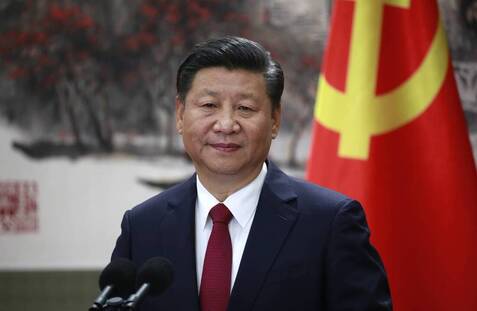
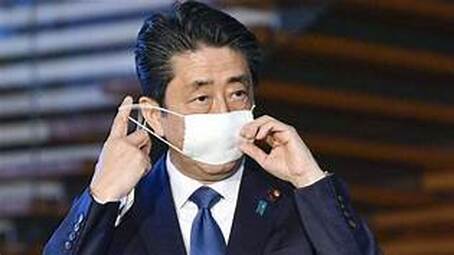
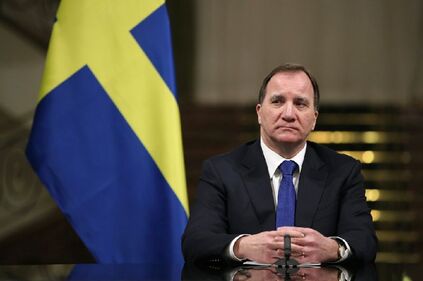
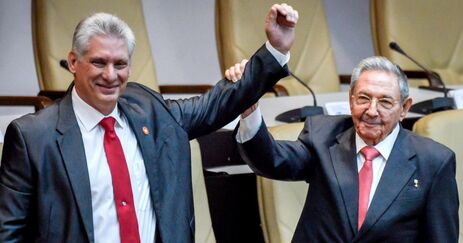
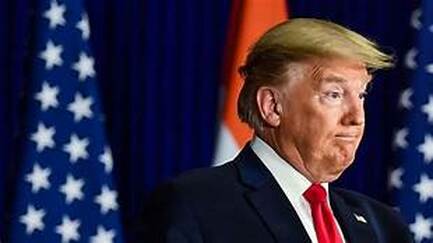

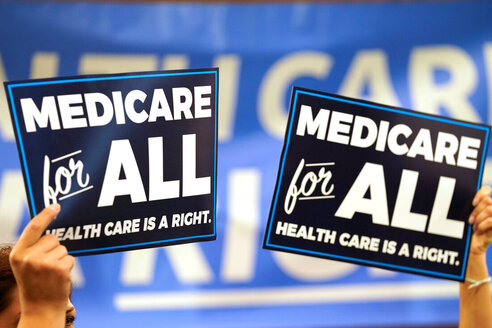


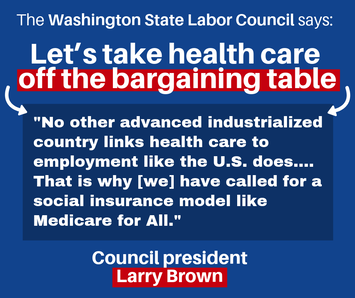


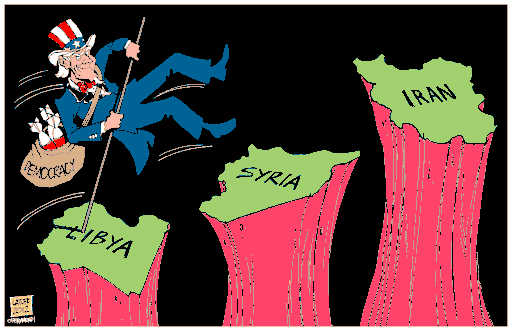








 RSS Feed
RSS Feed